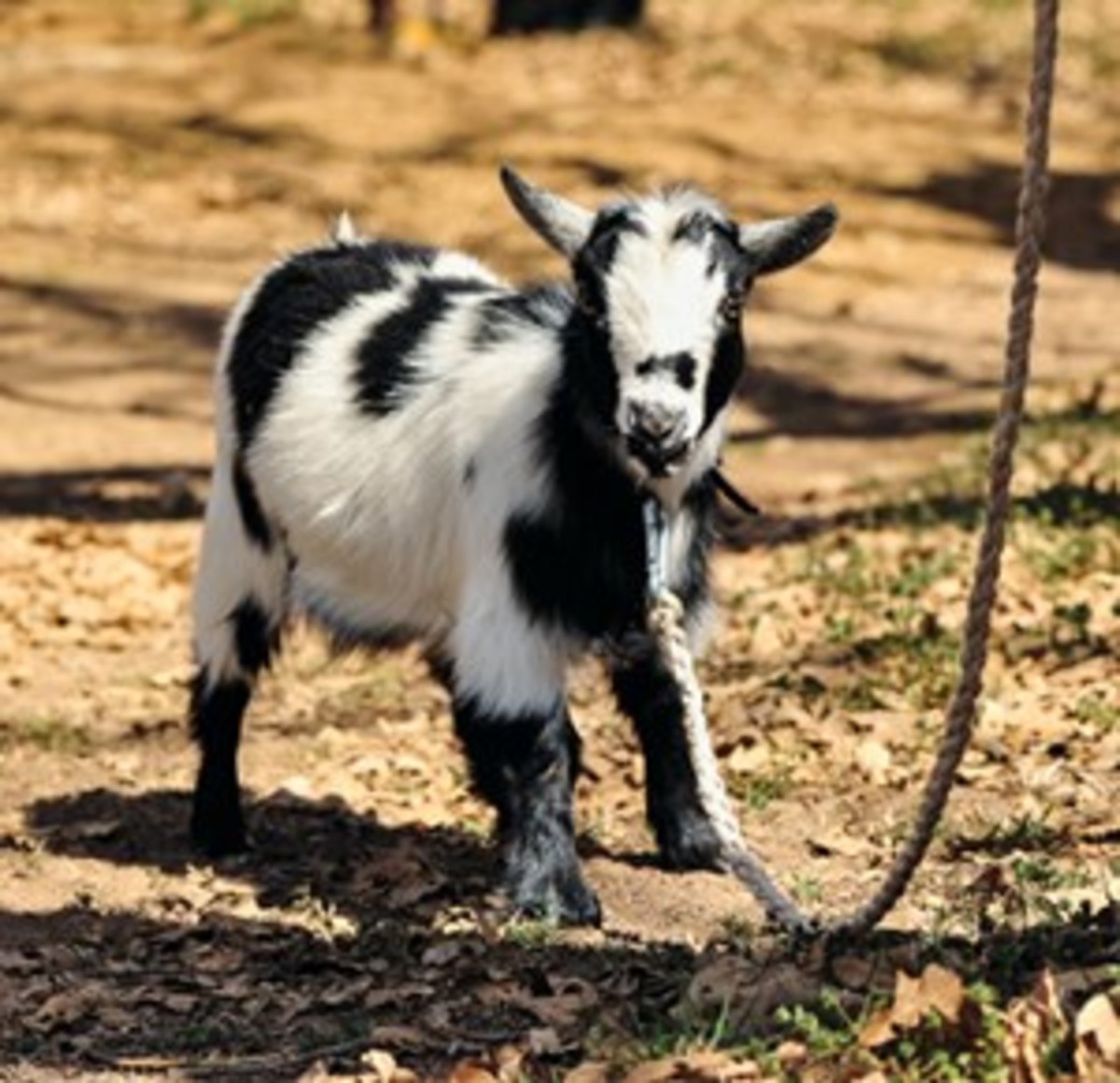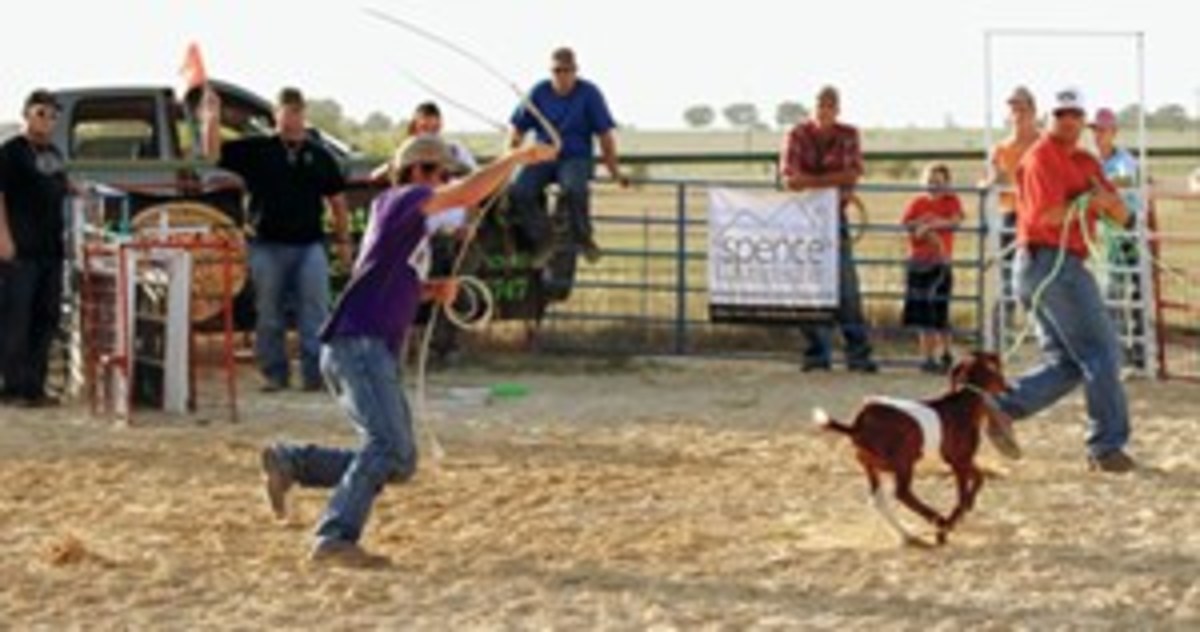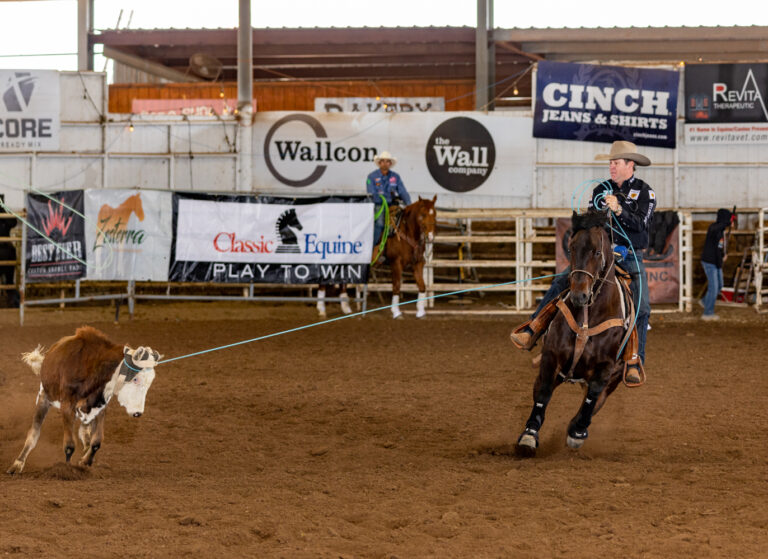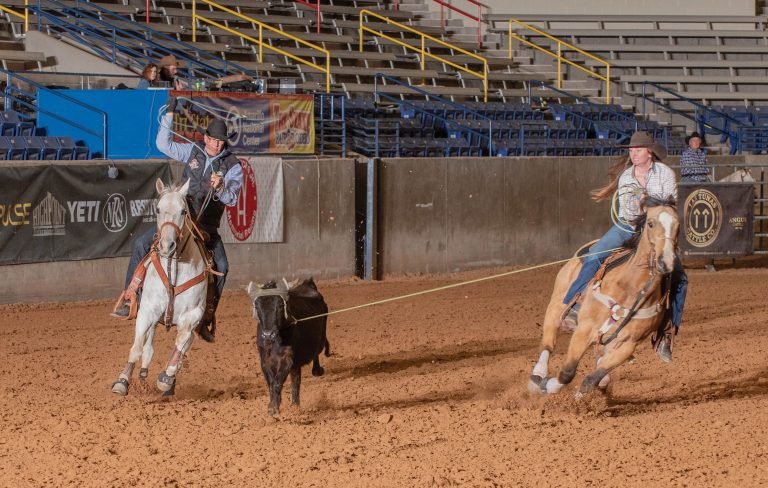While roping a goat is as old a tradition as any in team roping culture, the phenomenon of goat ropings paying out thousands of dollars and awarding big prizes is relatively new. Producers are responding to ropers’ relentless desire for camaraderie and competition in the arena with a family-friendly sport that complements its full-sized team roping counterpart perfectly.

When 14-time WNFR qualifying heeler Monty Joe Petska was a 7-year-old boy in New Mexico, a friend gave him a nanny goat and two kids. Never without a rope in his hand, he began heeling them, and soon he was riding one goat around the pen, heeling the others. By the time a young Clay O’Brien Cooper came to stay with the Petskas a decade later, Petska had nearly perfected the techniques surrounding practicing his roping skills behind a goat.
“When Clay came and lived with Marty, we always headed and heeled them,” Petska remembered. “We’d ride our colts and head and heel ’em and then we’d rope them afoot. When Clay came, we borrowed a nanny, and we’d head and heel her. Then I’d tie her to a tire and graze her. But then we’d get to chasing her so we could heel her around that tire. I’d have to every so often let my tire unwind, and then my brother Marty one day came in and built a pivot so I could stick her on the pivot. And we did that from then on.”
“Monty Joe was as fanatical about roping as I was,” Cooper said. “It was 24-7 having a rope in your hand, either roping a dummy, a goat or a live steer. I was always in the act of roping constantly. Going to the Petskas was a very natural thing to do because it’s what I did, too. Just learning how to handle a flimsy rope on a goat teaches you rope handling skills and throwing loops on a moving object just starts to build that basic infrastructure you need to be a good roper. That’s what taught me how to time a moving steer.”
Goat roping has been a staple among the ropiest of competitors and children in team roping alike for years, and suddenly associations are popping up all over the country to harness the passion kids and adults alike have for chasing a goat around a small arena, decades after Monty Joe and the Champ mastered the art in the plowed fields of the Petskas’ 160-acre cotton farm. The sport, while remaining one of the best ways for ropers to work on timing and loop mechanics, has grown into its own beast all together, with added-money jackpots and great prizes for teams who can head and heel a nanny, all with little costs and low overhead.
“These goat ropings give a family a chance to be a family,” said Will Stevens of Mad Goat Productions, which produces goat ropings nearly every weekend across Texas, as well as at the Sands’ Country Christmas in Las Vegas during the Wrangler National Finals Rodeo. “Our biggest kick is seeing the people who come over. From the rodeo fan who wants to be a part of the action to the pros who come rope with their kids and the grandparents who come rope with the grandkids.”
For those who haven’t made it to a goat roping before, the arenas are generally about 40 feet by 40 feet, complete with a heading box, heeling box, chute and return alley. They resemble any other roping, and can be run in the same format as any jackpot too. In Fredonia, Pa., Dave Zebrovious runs Circle Z Bar’s 20-person-per-side jackpots as a round robin with a youth division followed by an open. Will Stevens’ Mad Goat Productions goat ropings will bring in 200 teams to their three-head progressive-on-one format, and at Joe’s Boot Shop in Clovis, New Mexico, Coli Hunt runs a Labor Day Weekend 10-head-average jackpot that regularly draws in 1,100 teams over three days. Spanish goats, according to Hunt, hang the toughest throughout the ropings and rebound quickly, so they’re the preferred breed of goat for many in the industry.
“You get worn out with the long nights of putting these ropings on, but the confidence you’re building in these kids can’t be measured,” Zebrovious said. “I grew up on horses, and I saw my 15-year-old’s son’s friends getting out of horses because ropings are disappearing on this side of the country. These goat ropings generate activity for kids where they don’t have other options in roping. Kids who see roping might go to their parents and tell them they want to rope, but unlike out West, their parents have maybe never roped. They go and see they need a $10,000 horse, $25,000 truck, $15,000 trailer, and they get sticker shock. So this is a way for those kids to learn how to rope and get the whole idea of how a jackpot works and to put themselves in high-pressure situations early on.”

Zebrovious formed the United States Goat Roping Association three years ago so that people with no horse, no saddle, no truck and no trailer can win ropings, too. For 2015, the association will hold four jackpots and a finals with year-end buckles, awards and added money.
With entry fees running from $1 on the low side to $100 to rope 10 head for thousands of dollars in payout, goat roping can be one of the least-expensive options in the team roping universe.
Stevens, who has spent 30 years in law enforcement and currently works as a deputy sheriff, plans to retire this year and make his living putting on goat ropings. He’s also become a goat stock contractor of sorts. Because he’s got so many goats for his ropings, he now supplies goats for the Texas High School Rodeo Association’s and Junior High School Rodeo Association’s goat tying, as well as putting on goat ropings at their events.
“I started analyzing how expensive team roping is,” Stevens, whose ropings often coincide with actual roping and rodeo events, said. “These goat ropings let people be a part of something they can afford to do and still walk away with as much as they can win at some jackpot team ropings. A grandfather who maybe can’t get on a horse anymore can rope with his 5-year-old granddaughter. Kids whose moms and dads rope used to be sitting around in the stands. Now they can spend their day while their parents are roping at the goat roping arena.”
“People can spend $1 per roper and enter 20 times and have all the fun in the world,” Joe’s Boot Shop’s Hunt said. “It’s cheap entertainment, and it’s a draw for our business. Goat roping around here has been huge for years, and it’s catching on everywhere.”
The Navajo Nation has long been proud of its goat roping tradition. Whip Lewis, of Queen Creek, Ariz., produces goat ropings once a month that draw in 100 to 300 teams per day, often coinciding with junior rodeos or World Series of Team Roping productions.
“It’s fun for the kids to be able to compete on something live,” Lewis, who’s been putting on goat ropings for four years, said. “The Navajo kids are really good at it, and they have a lot of goats on the reservation to rope, too. They come out in big numbers.”
“It’s almost like every kid who ropes needs a goat,” said six-time WNFR header Derrick Begay. “It helps them on their roping, but it teaches them responsibility and gives them something to take care of. It’s popular on the reservation because a lot of people have goats and can relate to it. Kids grow up roping them on the reservation. Team roping started as a working tradition, and it’s kind of that way with roping goats and it turned into a competition. It’s fun, and it’s more convenient to go to, financially and everything else.”
At the USTRC’s Cinch National Finals of Team Roping and the Lazy E Arena’s Guthrie Shootouts, Justin Harrell puts on goat ropings every day that draw in about 300 competitors per day for the duration of the Finals.
“Trevor Brazile had his son at the goat roping, and he never turned one kid down who asked him to rope,” Harrell said. “To see the look on the kids faces, to say that they roped with someone like Trevor Brazile, that’s what it’s all about. There are days when we actually see daylight before we close those ropings. At the International Finals Youth Rodeo in Shawnee (Okla.), every day we rope from noon until the sun comes up the next day. As long as we’ve got kids who want to rope and goats who can run, we rope.”
Harrell has been putting on goat ropings for 17 years, and he said the sport is growing thanks to other goat roping producers, like Zebrovious and Stevens, picking up the torch.
With goat roping participation on the rise, Mad Goat Productions’ Will Stevens is upping the ante. On April 18, the family-run company will produce a $5,000 added goat roping in Lampasas, Texas.
And the pros, they’re still roping their goats for practice on the rodeo road. Eight-time WNFR qualifier Cesar de la Cruz hauls a goat with him on the rodeo road, and his boys Camilo and Gio rope it daily.
“I tell everybody to rope goats,” de la Cruz said. “If everybody in the top 15 is any kind of heeler, they can rope a goat. Matt Zancanella, you should see him rope goats. In Arizona, the goat roping scene is huge. Goat roping setups are mobile, and they set them up at all the team roping jackpots for the kids and the families. It’s the perfect practice, even for more. If you can rope a goat, you can rope a steer. I rope mine more than ever, and running around chasing that goat is the best workout.”
“It’s how I learned to heel,” two-time world champion Patrick Smith said. “I give a lot of credit for my success to roping a goat. I think it’s one of the best ways to learn timing and rope control. It’s also a good way to stay in shape.”
As for Petska, he still goes to the sale to buy goats for practice around the house.
“It’s probably the best live practice besides steers,” Petska said. “You get a lot of the same shots you do from a steer on a goat. There’s a lot to it. You know, it’s just like anything. If you don’t try to manipulate it like a steer, it won’t do you any good. You can rope them a lot of different ways, but if you do it so you’re trying to make your shot the same as you’re heeling a steer, it works. You want to use something limber so you’ve got to make your loop work. Playing, you learn more playing than anything else, and roping goats can sure be fun.”
Learn more:
Circle Z Bar Ranch
circlezbarranch.com
(724) 699-7141
United States Goat Roping Association
usgrac.com
Mad Goat Productions
madgoatproductions.com
(254) 640-0525
Harrell Goat Ropings
(405) 306-8012










